Pseudevernia furfuracea (L.) Zopf. - Parmeliaceae - tree moss, Bandflechte
„… a lichenized species of fungus that grows on the bark of firs and pines… Large amounts of tree moss (approximately 1900 tons in 1997) are processed in Grasse, France for the perfume industry.“ https://en.wikipedia.org/wiki/Pseudevernia_furfuracea
„Atranorin (1), physodic acid (2), oxyphysodic acid (3) and virensic (4) acid were identified in P. furfuracea, a lichen species collected in West Tatra. According to HPLC analysis contents of these metabolites in dried material was 0.11-0.19% (1), 1.46-3.78% (2), 1.69 to 3.44% (3), 1.14-1.46% (4). Atranorin was the strongest inhibitor of trypsin as well as of the porcine pancreatic elastase.“
[Metabolites of Pseudevernia furfuracea (L.) Zopf. and their inhibition potential of proteolytic enzymes., Proksa, B., Adamcova, J., Sturdikova, M., Fuska, J., Die Pharmazie, 49(4), 1994, 282-283]
„… the aroma constituents in both treemoss concrete and absolute oil were basically similar, the key aroma compounds were 3,5-dimethoxy toluene, 3-methoxy-5-methylphenol, atranol, methyl 2,5-dimethylresorcylate, methyl hematommate, ethyl hematommate, ethyl everninate, methyl divaricatinate, ethyl divaricatinate, ethyl palmitate, ethyl linoleate, ethyl oleate, ethyl stearate, abietic, acid methyl abietate…“
[WANG DI Technology Center of Yuxi Hongta Tobacco Group, Yuxi 653100, Yunnan, China; Analysis of Treemoss Concrete and Absolute Oil and its Application in Tobacco Flavoring [J]., Qiang, L., De-Shou, M., Chun, H., Tobacco Science & Technology, 2005, 3]
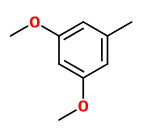 3,5-dimethoxytoluene (DMT) (tea-like) | 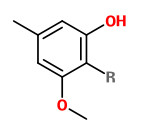 3-methoxy-5-methylphenol (Orcinyl 3, R=H) | 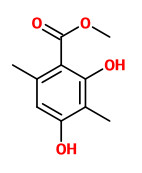 Evernyl (methyl-β-orcinol carboxylate, veramoss, verymoss) | 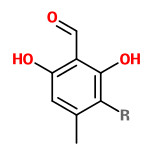 atranol (R=H) chloroatranol (R=Cl) |
„… the fragrance industry indiscriminately indicated under the name of ‘oakmoss’ the lichen collected on oak trees or the lichen collected on other trees. However, distinction has been made traditionally between ‘cedarmoss’ collected mainly in Morocco on cedar trees (Cedrus atlantica), and ‘treemoss’ gathered from pine trees (Pinus spp.), although the lichen species is actually the same (P. furfuracea). The difference in fragrance is mainly attributable to the wood, twigs, bark, etc. from pine trees, which contaminate the lichen to various extents…
In principle, so-called treemoss extracts are mostly manufactured from Pseudevernia furfuracea (L.) Zopf., a lichen which is particularly common on coniferous trees, mainly pine, and cedar trees. Four chemical races of P. furfuracea have been defined: one contains mainly physodic acid, a second physodic and olivetoric acids, a third olivetoric acid and the last one physodic, olivetoric and oxyphysodic acids…
When standard treemoss is collected on pine trees in the Massif Central, France, it is usually made of 40–70% by weight of components (wood, bark, twigs, needles, etc.) harvested from the tree itself. In some cases, this
proportion can even reach 80%…
The content of defined lichen compounds in P. furfuracea has only rarely been measured. In most cases, the preferred analytical technique is HPLC. For example, atranorin, physodic acid, hydroxyphysodic acid and virensic acid are claimed to represent 0.11–0.19%, 1.46–3.78%, 1.69–3.44% and 1.14–1.46%, respectively, in dried lichen from Slovakia. For the same reasons that have been discussed previously in the case of oakmoss, quantitative data on the composition of industrial resinoids and other extracts of P. furfuracea are even more scarce. For example, a commercial treemoss absolute oil was found to contain 8.7% methyl β-orcinolcarboxylate, 0.4% ethyl haematommate, 0.3% ethyl chlorohaematommate and 0.3% atranorin.“
[Lichen extracts as raw materials in perfumery. Part 2: treemoss., Joulain, D., Tabacchi, R., Flavour and fragrance journal, 24(3), 2009, 105-116] [http://doc.rero.ch/record/12241/files/Joulain_Daniel_-_Lichen_extracts_as_raw_materials_2_20090630.pdf[]
„Concerning the related treemoss (mousse d'arbre, Pseudovernia furfuraceae (L.) Zopf), which also contains the allergens atranol and chloroatranol, 2% have been used in the woody citrus 'Essential' (Lacoste 2005),…and more recently 0.5% by Jean-Claude Ellena in 'Terre d’Hermès' (Hermès, 2006).“
[Scent and Chemistry, Günther Ohloff, Wilhelm Pickenhagen, Philip Kraft, Wiley-VCH, 2012, 322]
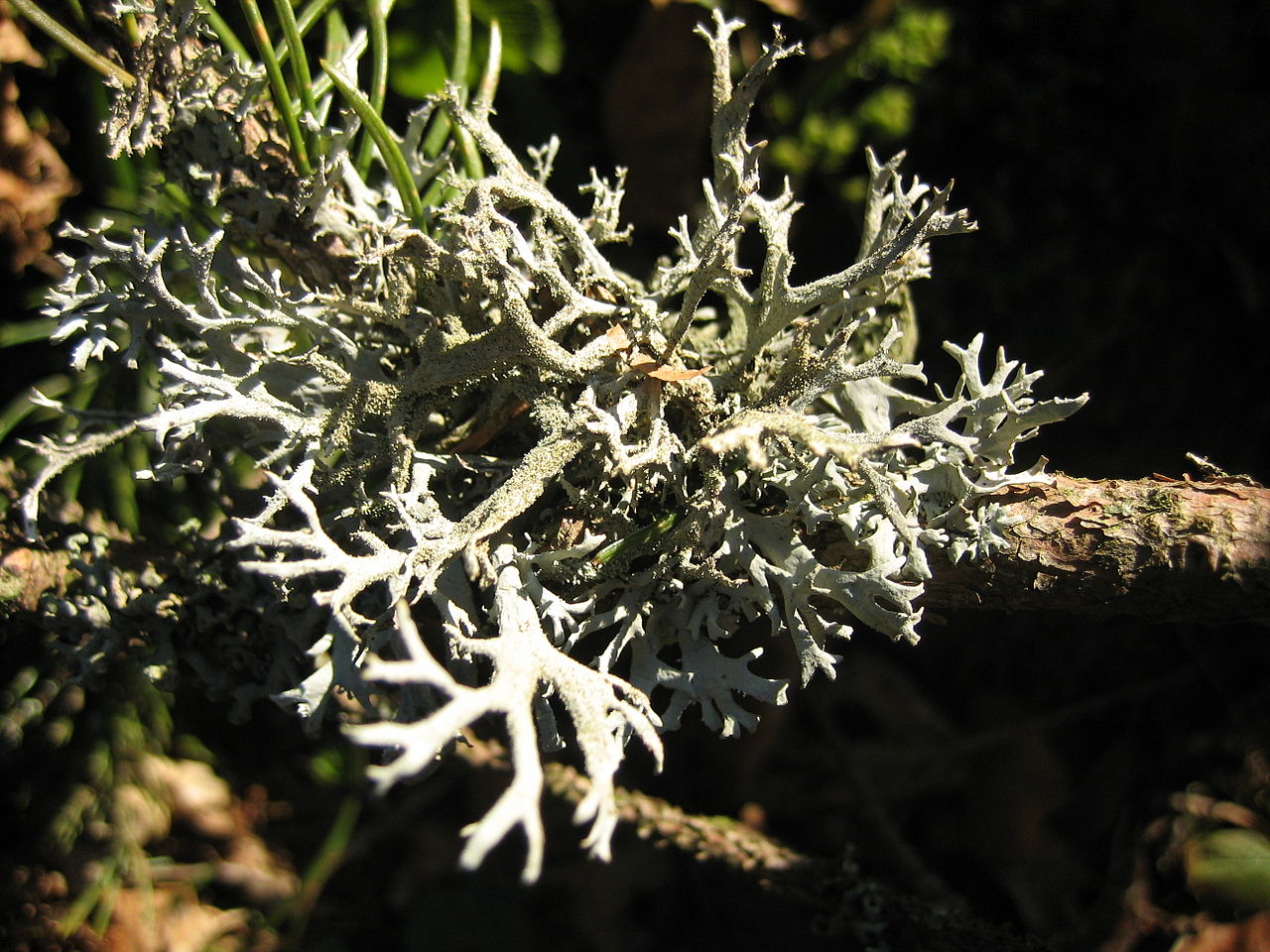
Pseudevernia furfuracea, Alps (Austria)
author: Untilone, © free, wikimedia commons